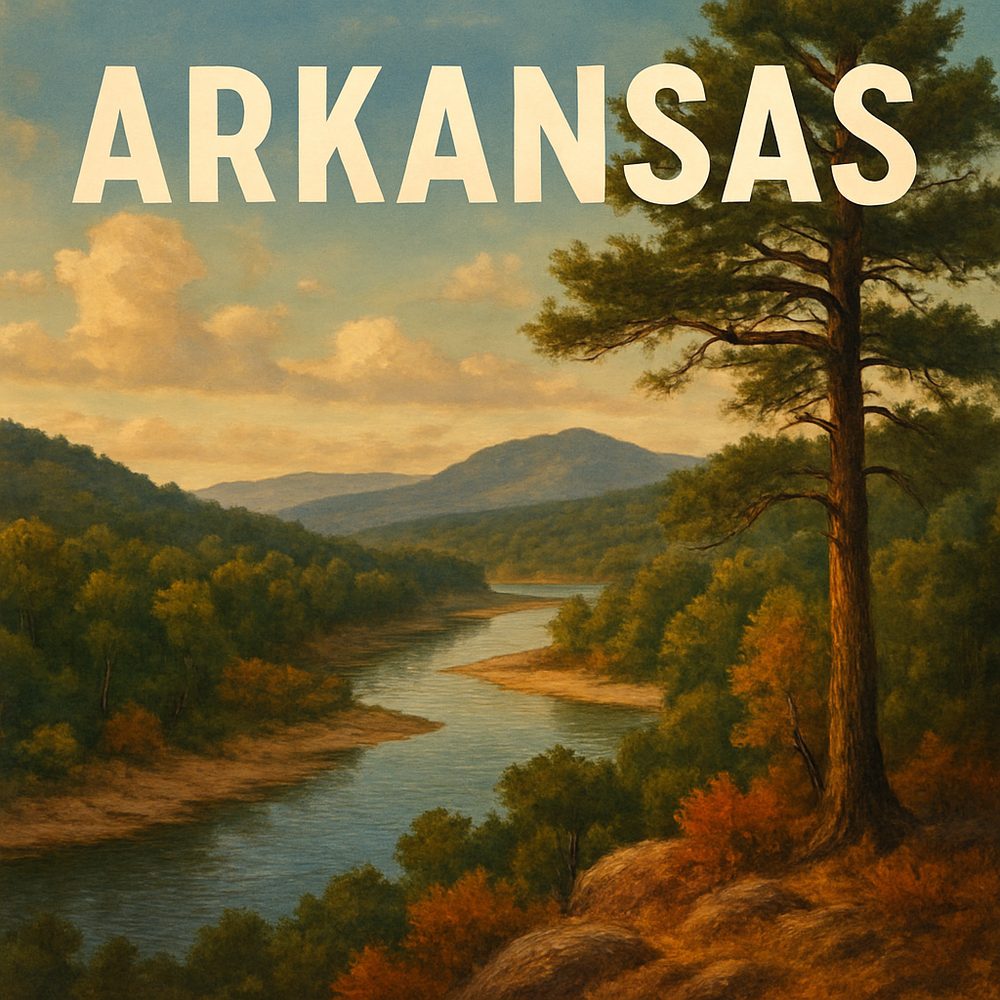Arkansas’s Role in American Music: From Jazz to Rock to Country

Nestled in the foothills of the Ozarks, the Crystal Bridges Museum of American Art in Bentonville, about 2.5 hours northwest of Little Rock, offers more than just a stunning collection of American art—it’s also a place where visitors can indulge in the rich musical heritage of the nation. The museum frequently hosts live performances in its striking glass and wood pavilion, blending culture with natural beauty. Here, the echoes of jazz standards and folk tunes often drift through the trees along the museum’s trails, connecting the visitor to the rhythms that have shaped American music. The setting itself is unique, with winding paths alongside the crystal-clear streams that inspired its name, making this art and music experience a serene escape best enjoyed in the crisp air of spring or fall when the surrounding forest is either bursting with wildflowers or painted in autumn hues.
A short drive south from Bentonville, the town of Fayetteville boasts the Walton Arts Center, a premier venue that has nurtured Arkansas’s vibrant music scene for decades. Located about 45 minutes west of Springdale, this center is a hub for genres ranging from country to blues, reflecting the diverse musical roots of the state. Catching a live show here gives a sense of place and performance, with the intimate theater space fostering a close connection between the artists and audience. Fayetteville’s lively downtown often spills over into the streets after performances, offering a chance to soak in the local spirit. Visiting during the warm summer months allows for an extended evening outdoors, where the sounds of Arkansas’s evolving musical tapestry harmonize with the buzz of the college town.
In the heart of Little Rock, the Arkansas Arts Center serves as a vital cultural anchor. Just a five-minute drive from downtown, the center is home to exhibits that highlight the state’s contributions to American music history, especially reflecting on jazz and blues. Inside, the permanent collection often includes instruments and memorabilia from legendary Arkansas musicians, providing tangible links to the past. The nearby River Market district complements this visit with its frequent outdoor concerts and lively atmosphere, making it an ideal spot to experience both heritage and contemporary interpretations. Visiting in late spring, when the River Market hosts its music festivals, offers an immersive experience where visitors can trace the evolution of Arkansas’s musical identity from the galleries to the streets.
Driving about an hour northeast of Little Rock, the town of Helena stands as a beacon of blues history. The annual King Biscuit Blues Festival there celebrates the legacy of the King Biscuit Time radio show, one of the longest-running blues programs in the country. Helena’s historic downtown, with its preserved brick streets and period architecture, offers a step back in time to when blues musicians like Sonny Boy Williamson honed their craft. Walking through the Delta Cultural Center, which is located close to the Mississippi River, visitors encounter exhibits dedicated to blues music’s roots in the Arkansas Delta, complete with vintage photographs and original recordings. This area is especially atmospheric in the fall, when the river mist adds a haunting backdrop to the music’s soulful narratives.
El Dorado, about four hours south of Little Rock near the Louisiana border, pulses with country music history. The Murphy Arts District has transformed this once-oil boomtown into a modern venue where country legends and new talents share the stage. Its state-of-the-art performance halls and outdoor amphitheater bring the energy of Nashville to Arkansas’s south. Exploring the nearby downtown, visitors find murals and landmarks celebrating local musicians, giving a sense of pride and place. The best time to visit is during the summer concert series when warm evenings invite music lovers to linger long after the final encore, savoring the blend of southern charm and country twang.
Ozark Folk Center State Park, situated in Mountain View about two hours north of Little Rock, offers an immersive musical journey into traditional Appalachian folk and bluegrass. This living history museum celebrates the craft and sound of Arkansas’s rural musicians, with daily performances by master craftsmen and musicians who keep these traditions alive. Visitors can join workshops or simply enjoy the informal jam sessions that fill the open-air theater with lively tunes. The park’s surrounding Ozark Mountains provide a stunning natural backdrop, especially vivid in the late spring when wildflowers blanket the hillsides. The authenticity of the experience here is unmatched, offering a hands-on connection to the roots of American music that are often overlooked.
Finally, the legendary Johnny Cash Boyhood Home in Dyess, located about three hours east of Little Rock, invites visitors to step into the early life of one of Arkansas’s most influential musical icons. The modest farmhouse and surrounding fields tell the story of Cash’s humble beginnings and the rural struggles that shaped his voice and songwriting. The site includes a visitor center with exhibits detailing his career spanning country, rockabilly, and gospel music, making it a pilgrimage spot for fans and history buffs alike. Visiting in the cooler months allows for a quieter, reflective experience amid the peaceful Arkansas Delta landscape, where the seeds of a music legend were first sown. Here, the raw emotion of American music feels palpable, grounded in place and memory.